SO-CAL WAS ONCE THE PROMISED LAND OF DRAG RACING
Thu, 2010-01-14 16:01
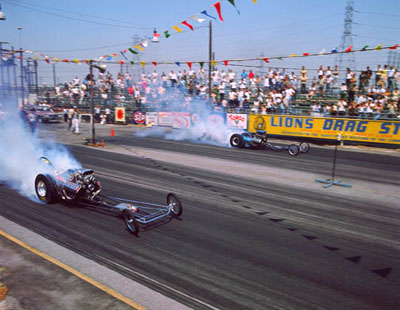 Where did all the tracks go?
Where did all the tracks go?“I'm going where the weather's warm and the tracks are hot. It's a whole other thing out West. Compared to that, this is minor league.” - Beau Bridges as Connie Kalitta in the 1983 film, “Heart Like a Wheel.”
Yes, for drag racers, Southern California in the 1960s and '70s was truly the land of milk, honey and racing, with some two dozen drag strips built between 1950 and 1980. The crown jewels being Lions Dragstrip in Long Beach, Calif., Irwindale Raceway and the crème de la crème, Orange County International Raceway in Irvine.
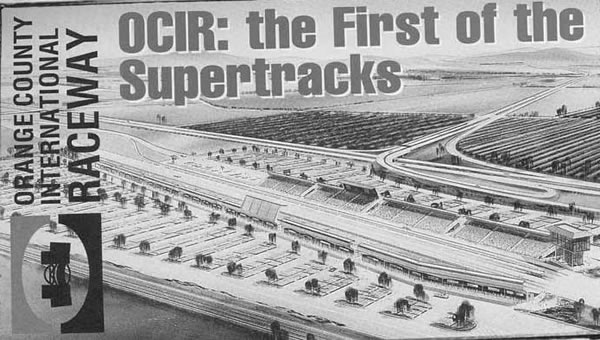
Where did all the tracks go?
“I'm going where the weather's warm and the tracks are hot. It's a whole other thing out West. Compared to that, this is minor league.” - Beau Bridges as Connie Kalitta in the 1983 film, “Heart Like a Wheel.”
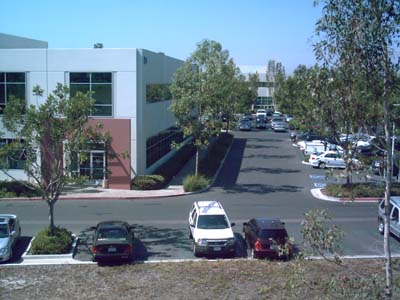
Shot from Barranca Parkway in Irvine and overlooks the approximate location of OCIR from behind the starting line. Where once there was the track and tower, now sits some office buildings.
It was a hot-rodder haven, with a summer race week featuring competition at Lions one night, at Irwindale the next and topping it off with a night of fun at OCIR.
In a blink of an eye, it was gone. This drag-racing utopia is now a racing graveyard. Lions is a storage facility for ocean-bound shipping, Irwindale now houses a Miller Brewing Co. factory and OCIR is a business complex.
All that remains of the glory days is Auto Club Raceway at Pomona, which hosts the NHRA Winternationals and World Finals. Where once stood some 24 tracks, now is home to just three - Pomona, a new Irwindale and Auto Club Dragway in Fontana.
“It's a shame,” said Steve Gibbs, the former track general manager at Irwindale Raceway and retired NHRA competition director who is now a member of the NHRA Wally Parks Motorsports Museum board. “There used to be a lot of tracks around here. But it was just real estate value. It was valuable land, and you just couldn't justify tying it up with a dragstrip.”
But for nearly two decades, Southern California, considering by many the birthplace of drag racing, was king.
It didn't start out that way, but to combat illegal street racing local police departments, similar to today, organized racing events on dry lake beds and abandoned air fields. Those spots eventually became racing strips.
The first being in 1950 when C.J. “Pappy” Hart, Creighton Hunter and Frank Stillwell received permission from Orange County and Santa Ana city officials to set up races on an unused runway at Orange County Airport, and Santa Ana Dragstrip, which sat on what is now John Wayne Airport, was born.
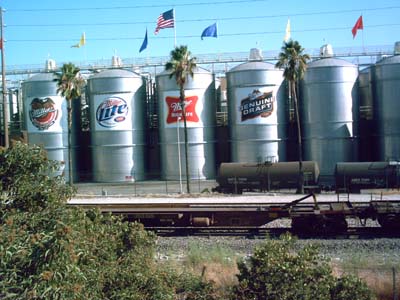
Shot from the 210 freeway that overlooks the Miller Brewery in Irwindale where Irwindale Raceway once sat.
These tracks gave Southern California four of the top racing venues, at least at the time and were among the best in the country. The facilities combined local racing with some first-rate spectacular match-race shows that featured the brightest drag racing stars of the era, who not only raced in the Southland, but some lived and ran their racing operations out West. The notables included “Big Daddy” Don Garlits, Shirley “Cha Cha” Muldowney, Don “The Snake” Prudhomme, Tom “The Mongoose” McEwen, “Jungle” Jim Liberman, “Lil” John Lombardo, and others.
But the real estate boom of the 1970s, which allowed for more affordable housing on the outskirts of Los Angeles was the death sentence of this nirvana. And most could see the handwriting on the wall.
“The racing wasn't the main reason for those sites to be there in the first place,” said Howard Osmer, a noted motorsports historian. “It was a case of the property being vacant and that the drag racers were allowed to run their races there. You had some purpose-built places later (Lions, Irwindale and OCIR), and those lasted for a longer time, because they were privately run and operated. But in time, those did give way to land-value pressures.”
Lions was the first to go. The Los Angeles Harbor Commission, which had given the track its permit to race, revoked it after 18 years. At first, it cited noise complaints, but in reality it wanted the land for its harbor expansion plan.
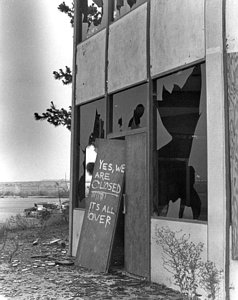
In this Don Gillespie photo, the sign leaned against the once breath-taking OCIR tower says it all.
OCIR's demise came in 1983.
Land values are the main reason for the lack of tracks in Southern California. However, as the NHRA, and to some degree, the AHRA and IHRA, developed as racing series, it left less need for match-racing, which was the bread and butter for tracks like Lions, Irwindale and OCIR.
“In the early days, there was no series, no (20-plus) national events,” Gibbs said. “It was every track for themselves and there were a lot of teams in Southern California. You could have a show where 30-40 cars would show up for the weekend.
“But as it became more of a professional series, it was becoming hard to stock these tracks. It's just evolution, I guess.”
There has been a resurgence in recent years. Irwindale Speedway, a NASCAR-sanctioned oval track, built a one-eighth mile strip in 2001 and was soon followed by California and now Auto Club Dragway, which built a quarter-mile strip. Both have programs to combat illegal street racing, which again has become a problem. Auto Club Dragway also hosts a NHRA Division 7 event every season and both have received rave reviews from racers and fans alike.
But, nothing beats the glory days.
[Video courtesy of the Jackson Brothers, Old Funny Cars-n-Force]
Advertisement
Categories:



































